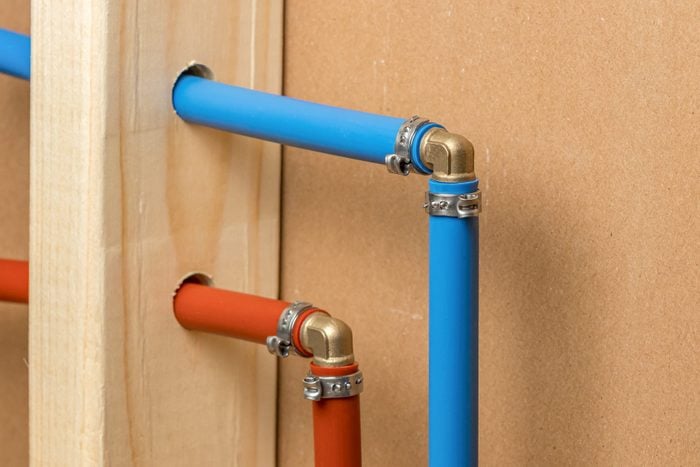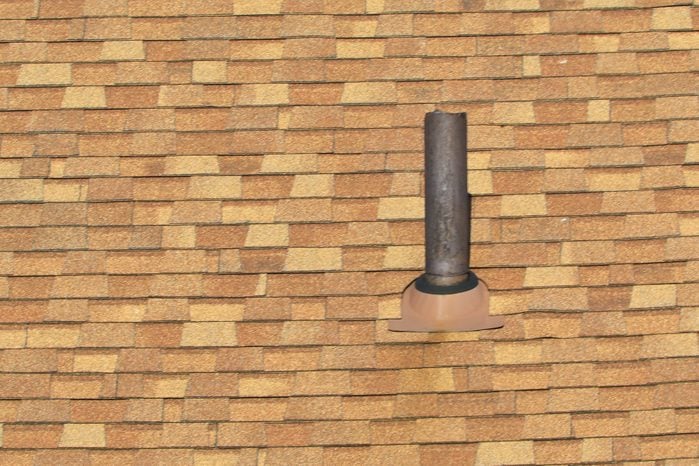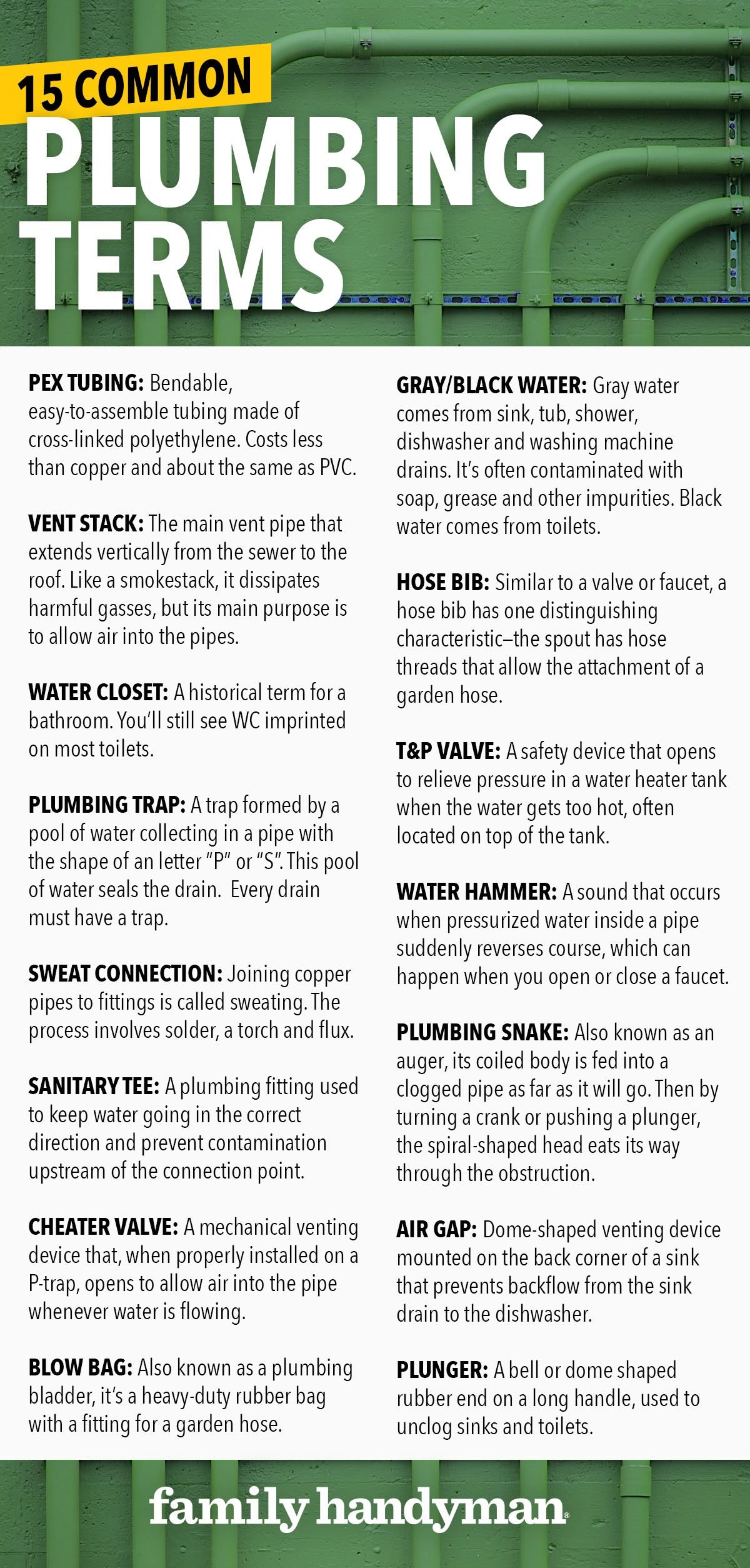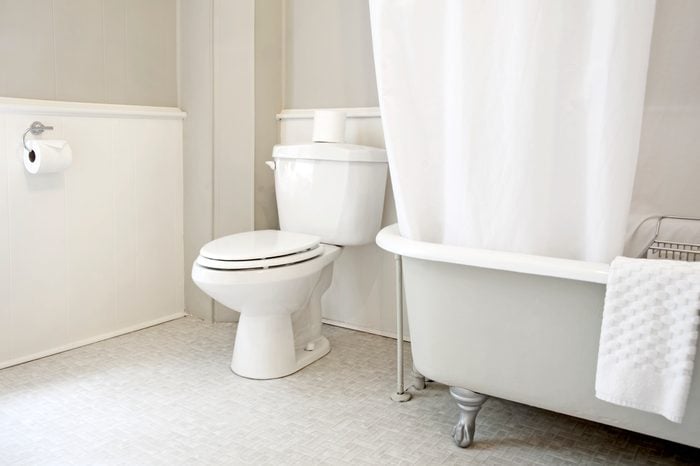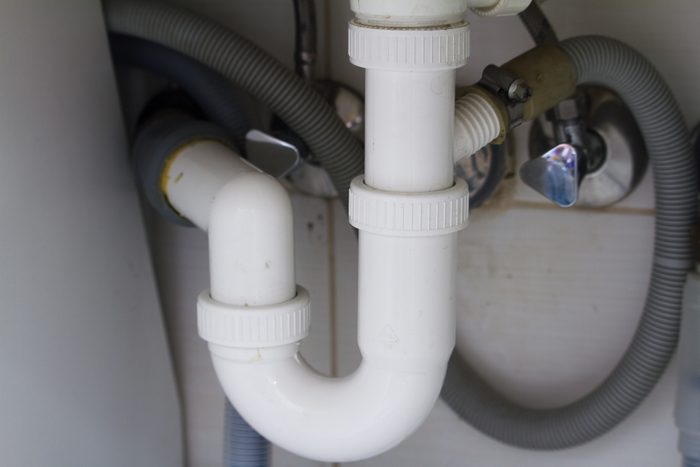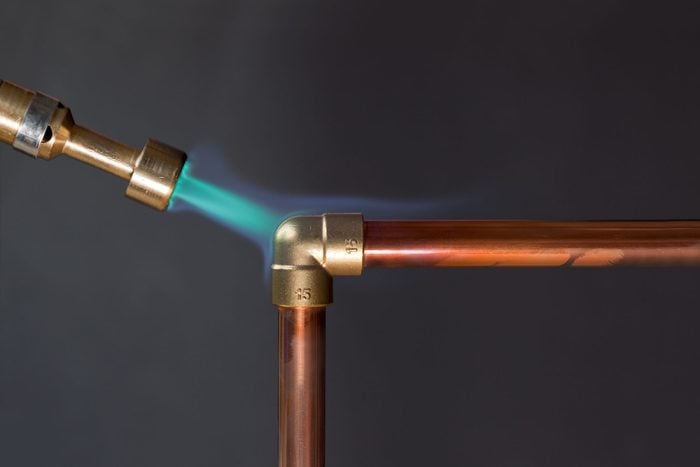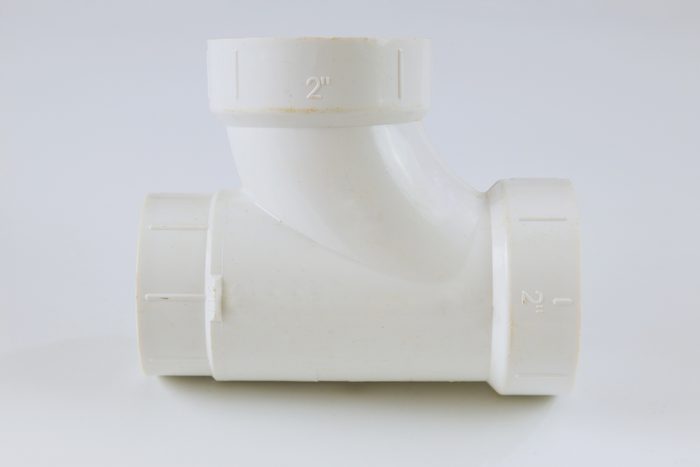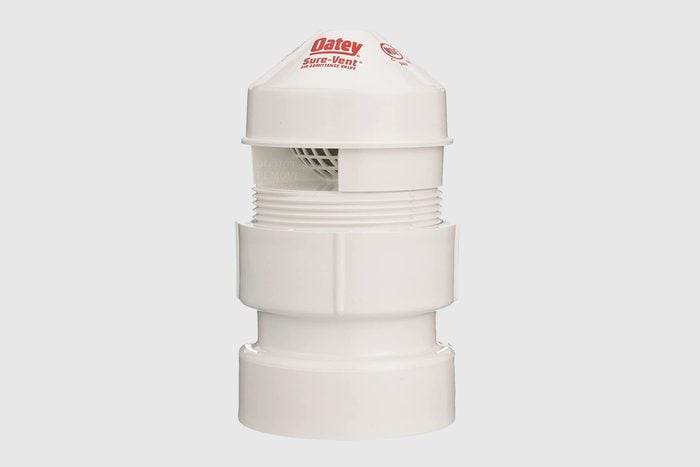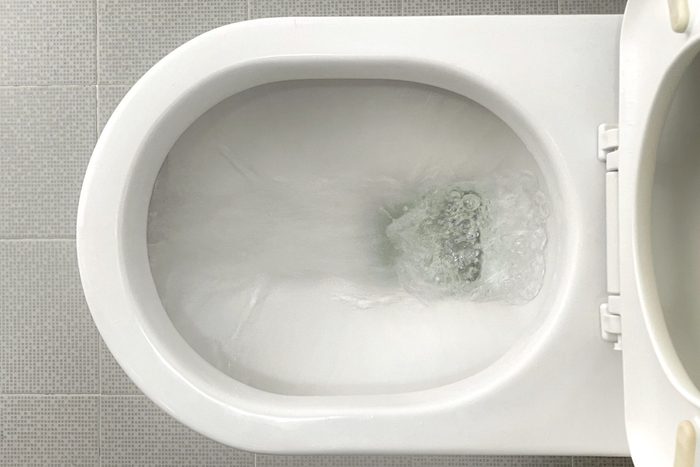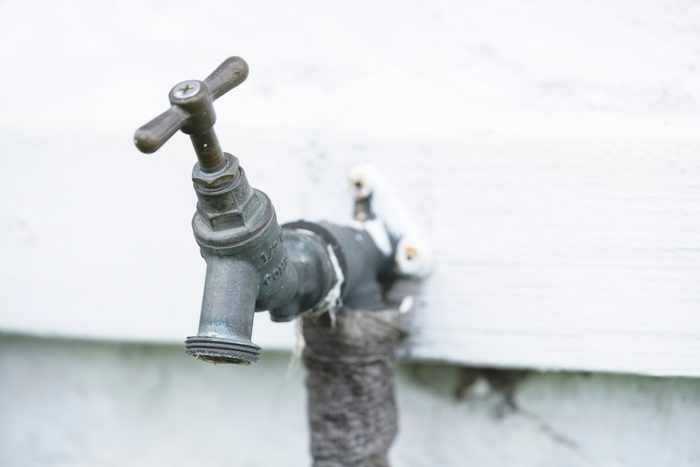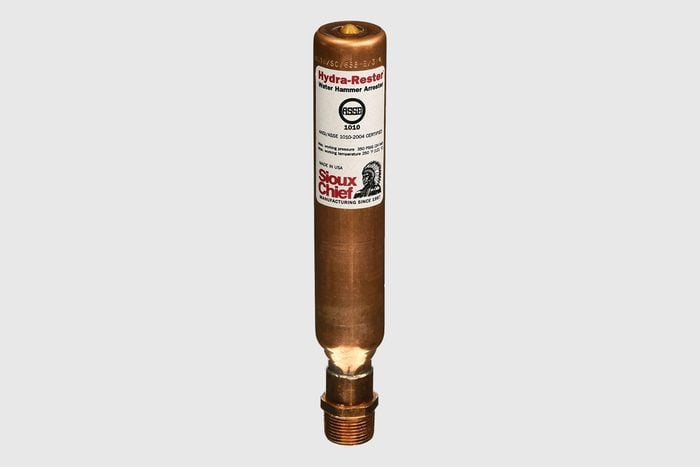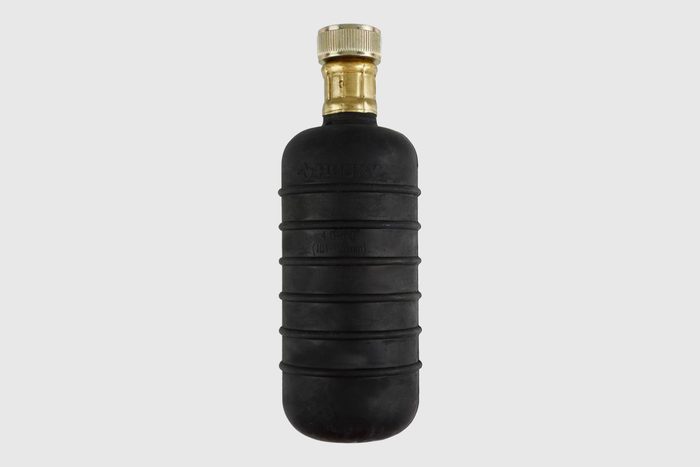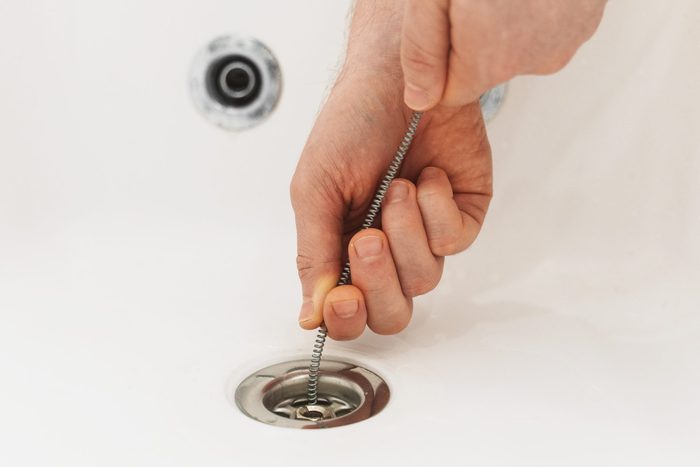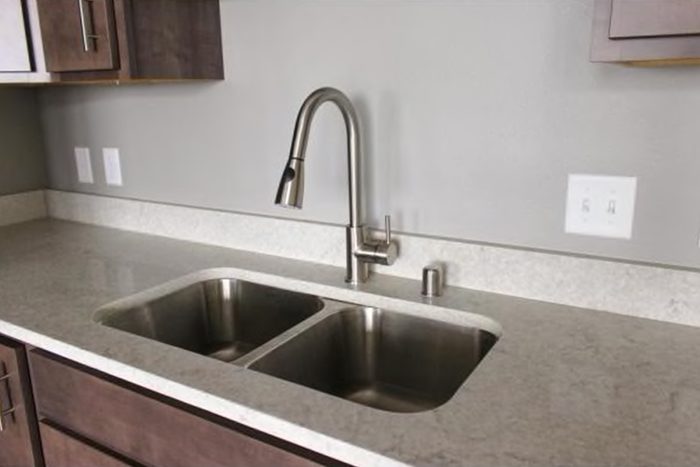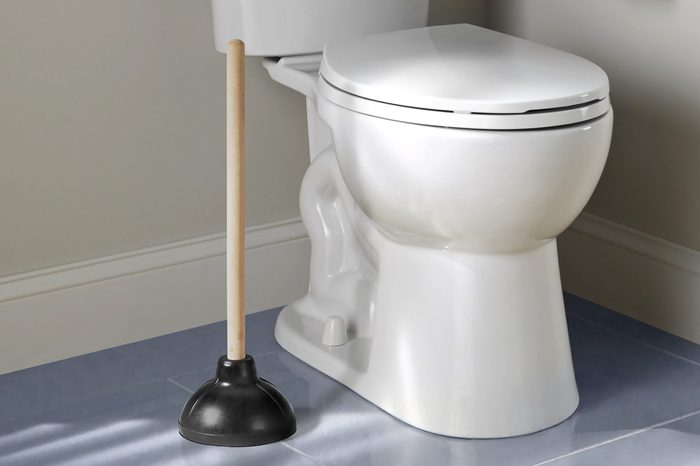PEX Tubing
Copper and galvanized steel water pipes are so last century. PEX (cross-linked polyethylene) is the water pipe material of the future. It’s bendable, a snap to assemble (literally) and even comes in blue and red so you can tell the hot water pipes from the cold ones. PEX is much cheaper than copper and on a par with PVC, another plastic material with a future.
Today, PEX is the material of choice for new water system installations, and it can also be tied into existing copper systems. One of the main drawbacks of PEX is that it isn’t rated for exterior above-ground use, so landscapers usually use polypropylene or PVC. Another problem: PEX fittings are more expensive than metal or PVC fittings.
Vent Stack
The vent stack in any building is the main vent pipe connecting the sewer to the roof. It’s that two- to three-inch pipe you see rising from the roof of every house, resembling a miniature smokestack. Each drain in the building has its own vent, and all of these branch vents typically connect to the main vent stack.
Like a smokestack, a vent stack dissipates harmful gases into the atmosphere, but its main purpose is to allow air into the pipes. Without a source of air to equalize pressure, negative pressure (suction) would slow down the flow of liquids in the pipes or stop it altogether.
If your toilet isn’t flushing properly or your drains run slowly, you might suspect a blockage. But the problem could just as easily be an obstructed vent stack.
Water Closet
This common plumbing term is historical. Back before centralized sewer systems and bathrooms were common in every home, people often piped water to a spare closet in the house and retreated there when the need arose. Because it had water, it became known as the water closet.
Somehow the name stuck, and plumbers continue to refer to a toilet as a water closet. That’s what the “WC” imprinted on most toilets stands for. By the same token, the fitting that performs the dual purpose of sealing the toilet to the waste line and holding it to the floor is known as a closet flange, and the tool you use to clean a blocked toilet is called a closet auger.
Plumbing Trap
A plumbing trap is formed by a pool of water collecting in a pipe with the shape of an inverted letter “P” or the letter “S” standing on its side. Per plumbing codes, every drain has to have a trap, and P-traps are the most common. The pool of water that collects in the inverted “P” seals the drain.
Traps are required in part because they catch solid objects (like your wedding ring) and prevent them from clogging the drain line. A far more important reason, however, is that the water seal keeps sewer gases and creepie-crawlies in the waste pipes and out of the bathroom, kitchen or laundry room. Even toilets have built-in traps, which is why there’s always water in the bowl.
Sweat Connection
Joining copper pipes to fittings is called sweating. The procedure involves the use of solder, a soft metal alloy that melts under the heat of a torch, and flux, a soapy substance that cleans oxidation off the copper to help the solder stick.
After coating the pipe and fitting with flux, joining them and heating the joint until the metal begins to glow, a plumber holds the tip of solder coil to the joint. The solder melts, wicks into the gap and solidifies as soon as the heat is removed, thus creating a watertight connection.
While the pipe is heating up under the torch, the flux bubbles up, and any moisture in or on the metal beads up and evaporates. This may be the reason this procedure is known as sweating.
Sanitary Tee
The fact that there’s such a thing as a sanitary tee may lead you to think there’s also such a thing as an unsanitary one. There isn’t. The terminology reflects the fact that a sanitary tee, or santee for short, is used only in waste lines, where sanitation is of prime importance.
Tees, plumbing fittings shaped like the letter “T,” are used, among other things, to tie a new pipe somewhere into the middle of an existing one. Tees used for pressurized water lines have a straight inlet port (the base of the “T”).
Waste lines aren’t pressurized, so the inlet port of a sanitary tee has a slight curve (sweep) in the direction of flow. Its purpose is to keep water going in the direction it’s supposed to go and prevent contamination upstream of the connection point.
Cheater Valve
Sometimes plumbers have to cheat to avoid a lot of extra work. When they use cheater valves, it’s usually because there is no easy way to vent a fixture drain. This situation can arise when installing island sinks or sinks in bathrooms far from the main vent stack.
A cheater valve is properly known as an air admittance valve (AAV) or a Studor valve after inventor Sture Ericson and his wife Doris (STUre + DORis = STUDOR). It’s a mechanical venting device that, when properly installed on a P-trap, opens to allow air into the pipe whenever water is flowing.
AAVs were introduced in North America in the late 20th century and plumbing authorities were slow to approve them. Most now do, but there are some holdouts, so it’s important to check local regulations before installing one.
Gray/Black Water
Water that pours from a faucet or into a toilet tank is usually clear. When it enters the drain, however, it assumes one of two new identities, gray or black water, and the difference between them is significant.
Gray water comes from sink, tub, and shower drains as well as dishwashers and washing machines. It’s often contaminated with soap, grease and other impurities, and you wouldn’t want to drink it. But you can use it to water your flower garden or lawn. Some eco-conscious homeowners have gray water collection systems for this purpose.
Black water comes from the toilet. It’s potentially loaded with dangerous pathogens and always flows into the sewer or septic system. It may ultimately be reclaimed after passing through a treatment plant or a septic drain field. But until that happens, it shouldn’t be handled for any purpose.
Hose Bib
A hose bib may be known by other names, including spigot, valve or faucet. But an actual hose bib has one distinguishing characteristic: The spout has hose threads that allow the attachment of a garden hose.
The added functionality of the hose threads is hard to overstate. Installing a spigot without hose threads on the side of the house would allow you to fill buckets with water but not water the garden with a hose or hook up a sprinkler.
Because water can potentially flow backward through a hose and contaminate the water supply, current codes require hose bibs to have backflow prevention devices, usually vacuum breakers. If you have an old hose bib without backflow protection, you can buy an inexpensive vacuum breaker you can screw onto it before you screw on the hose.
T & P Valve
The full name of this plumbing fitting is a temperature and pressure relief valve, and the place you’re most likely to find one is on the top of a water heater tank. It’s a safety device that opens to relieve pressure in the tank when the water gets too hot, thus averting a catastrophic explosion.
A T&P valve is a brass fitting about three inches high, usually connected to a pipe that runs along the side of the tank to the floor. If the valve opens and spews hot water mixed with steam, the pipe directs them to the floor, thus protecting anyone who happens to be in the room.
Water Hammer
It sounds like a gift Aquaman might give to Thor, but water hammer is more of a condition than a thing. It happens when pressurized water inside a pipe suddenly reverses course, which can happen when you open or close a faucet or the toilet fill valve switches on or off. Turbulence causes the water to push violently against the pipe, resulting a loud banging sound known as water hammer.
Water hammer can result from excessive pressure in the pipes or the pipe configuration. You can reduce or eliminate it by reducing the water pressure or installing a water hammer arrester, a fitting that absorbs the pressure of the turbulent water.
Blow Bag
Among the many ways to clear a clogged drain, the blow bag is one of the most ruthless. Also known as a plumbing bladder, it’s a heavy-duty rubber bag with a fitting for a garden hose.
When the bag is empty, you can easily insert it into a clogged drain. Once you’ve pushed it in as far as it will go, you turn on the water to the hose, which inflates the bag and forces it against the clog. That usually releases the clog and sends it down the drain.
Blow bags work well on drain pipes, but they aren’t recommended for clearing toilet clogs. Toilet pipes are too big to allow the bag to wedge itself in place and create the necessary pressure. Also, be aware that too much pressure can damage your pipes.
Plumbing Snake
With its coiled body and sharp head, a plumbing snake bears an uncanny resemblance to an actual snake. However, plumbing snakes are more correctly known as augers, and they come in various sizes. There’s a sink auger for clearing sink clogs, a toilet or closet auger for toilets and a motorized, extra-long sewer auger for really big clogs.
You use a drain or toilet snake by feeding the head into the clogged pipe as far as it will go, then turning a crank or pushing a plunger to open the jaws or rotate the spiral-shaped head. The snake then eats its way through the obstruction.
Drum augers, used for clearing drains and toilets, feature an ergonomic handle design that makes cranking easier and more effective. Some augers are designed to use with a drill.
Air Gap
Depending on where you live and the local plumbing regulations, you may have a dome-shaped fitting mounted on the back corner of your kitchen sink. This fitting is called an air gap, and you’ll have one only if you have a dishwasher.
The air gap, a type of venting device, interrupts the dishwasher drain hose on its path to the sink drain. It allows air into the drain hose and prevent backflow from the sink drain to the dishwasher.
If you have a dishwasher and don’t have an air gap, it’s probably because local codes allow a high loop. In this configuration, the drain hose is fastened to the underside of the sink cabinet to form a loop, which also effectively prevents backflow.
Plunger
You probably know what this is, but you may not know there’s more than one type. The small dome-shaped rubber plunger that you might have in the bathroom is a sink plunger. If the bathroom is well-equipped, you’ll also have a bell-shaped toilet plunger.
Sink plungers are designed only for sinks; their flat rims seal well against flat surfaces like sink, tub and shower drains. Toilet plungers fit inside the toilet opening. Heavy-duty toilet plungers are shaped like bellows to provide turbo-charged plunging power.
To use a toilet plunger effectively, first fill the bell with water so you’re not trying to break a clog with air. If you do this, the plunger is often the only tool you need to bust a toilet clog.

